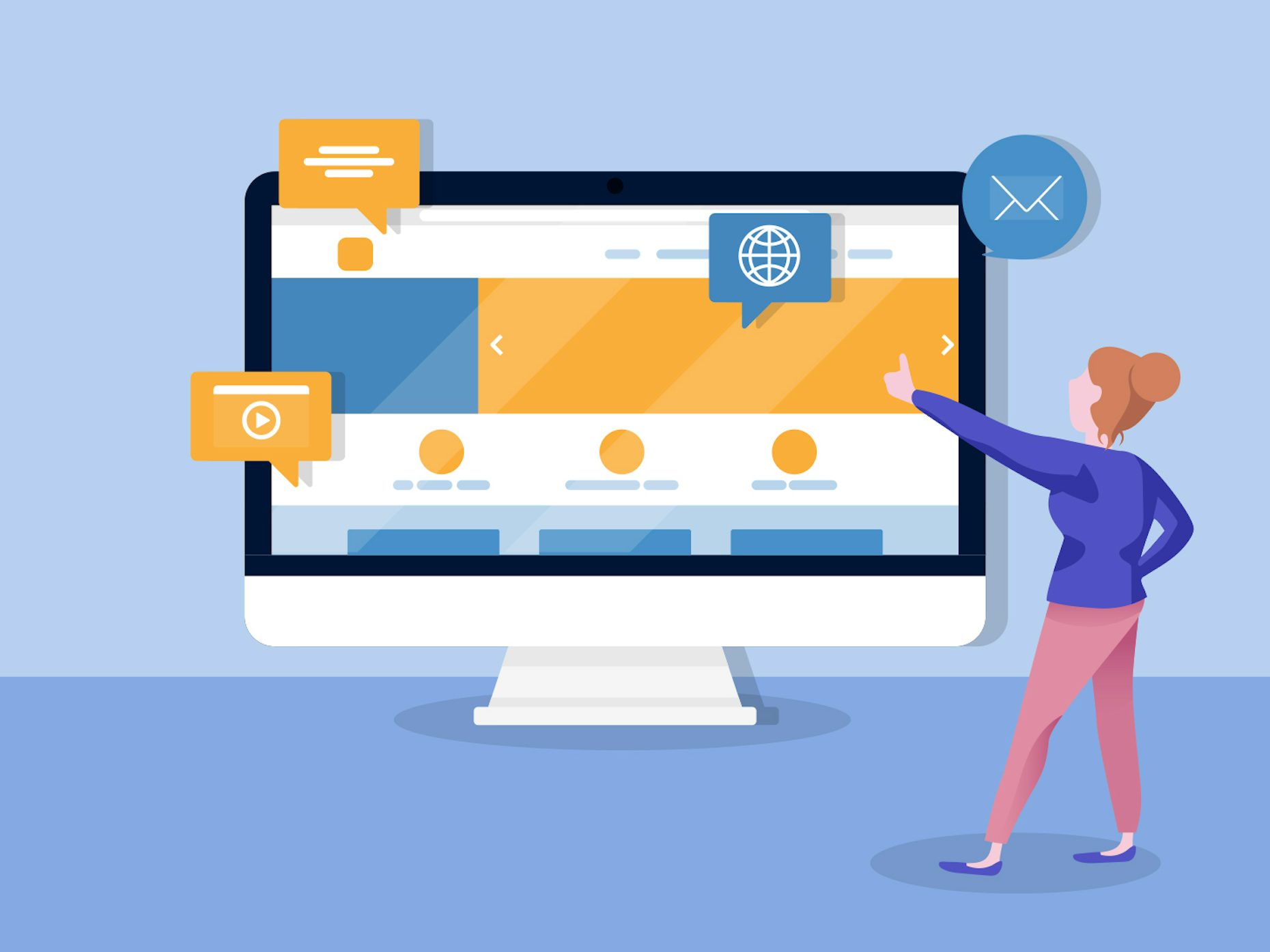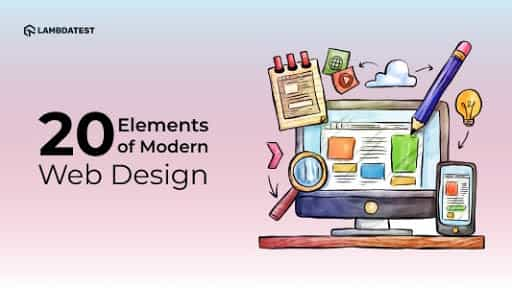All Categories
Featured
Table of Contents
- – Penner Home - Durham Web Design - Penner Web D...
- – Web Design And Engineering Major - Santa Clar...
- – Pueblo Web Design Tips and Tricks:
- – $899 - Custom Mobile Friendly Website Design ...
- – Indianapolis Web Design And Digital Marketing...
- – Web Design Software By Xara Tips and Tricks:
- – Web Page Design: A Comprehensive Guide - Ado...
- – Redtree Web Design - Pittsburgh Tips and Tri...
- – Learn Responsive Design - Web.dev Tips and T...
- – Top 30 Web Design Companies - Apr 2022 - Des...
- – Webpage Design (Article) - Further Learning ...
Penner Home - Durham Web Design - Penner Web Design ... Tips and Tricks:
Quick summary Functionality and the utility, not the visual style, identify the success or failure of a site. Because the visitor of the page is the only person who clicks the mouse and therefore decides whatever, user-centric design has established as a basic technique for effective and profit-oriented web style - web design frederick md.
and the energy, not the visual design, figure out the success or failure of a site. Because the visitor of the page is the only individual who clicks the mouse and therefore decides whatever, user-centric design has actually ended up being a basic method for effective and profit-oriented web style. After all, if users can't use a function, it may as well not exist.
g. where the search box need to be put) as it has already been performed in a number of articles; rather we focus on the approaches which, used appropriately, can lead to more sophisticated style decisions and simplify the procedure of perceiving provided info. Please notice that you might be thinking about the usability-related short articles we have actually published prior to: Concepts Of Good Website Design And Efficient Web Style Standards, In order to utilize the principles appropriately we initially require to understand how users interact with websites, how they believe and what are the fundamental patterns of users' habits.
Web Design And Engineering Major - Santa Clara University Tips and Tricks:
Visitors glimpse at each brand-new page, scan some of the text, and click the very first link that catches their interest or slightly looks like the thing they're searching for. In fact, there are big parts of the page they don't even look at. Many users look for something fascinating (or useful) and clickable; as soon as some appealing candidates are discovered, users click.
If a page provides users with premium material, they want to compromise the material with advertisements and the design of the site. This is the reason that not-that-well-designed websites with premium material get a great deal of traffic over years. Material is more vital than the design which supports it.

Users do not read, they scan. Notice how "hot" areas abrupt in the middle of sentences. This is normal for the scanning procedure. Extremely easy principle: If a site isn't able to fulfill users' expectations, then designer stopped working to get his task done properly and the business loses money. The greater is the cognitive load and the less intuitive is the navigation, the more willing are users to leave the website and look for options.
Pueblo Web Design Tips and Tricks:
Neither do they scan web page in a direct style, going sequentially from one site section to another one. Instead users satisfice; they select the very first sensible choice. As quickly as they find a link that appears like it might cause the objective, there is a great possibility that it will be immediately clicked.
It does not matter to us if we understand how things work, as long as we can use them. If your audience is going to act like you're creating billboard, then design excellent billboards." Users desire to be able to control their web browser and count on the constant data presentation throughout the website.
If the navigation and site architecture aren't user-friendly, the variety of enigma grows and makes it harder for users to comprehend how the system works and how to obtain from point A to point B. A clear structure, moderate visual hints and easily recognizable links can assist users to discover their course to their goal.
$899 - Custom Mobile Friendly Website Design By Go Web ... Tips and Tricks:

claims to be "beyond channels, beyond products, beyond distribution". What does it indicate? Given that users tend to explore sites according to the "F"-pattern, these 3 statements would be the first elements users will see on the page once it is filled. Although the design itself is basic and intuitive, to comprehend what the page has to do with the user needs to look for the answer.
When you have actually accomplished this, you can interact why the system works and how users can take advantage of it. Individuals won't use your web site if they can't find their method around it. 2. Don't Squander Users' Perseverance, In every project when you are going to offer your visitors some service or tool, attempt to keep your user requirements very little.
Newbie visitors are willing to, not filling long web types for an account they may never ever use in the future. Let users check out the site and find your services without requiring them into sharing personal information. It's not affordable to force users to go into an email address to test the function.
Indianapolis Web Design And Digital Marketing Agency Tips and Tricks:
And that's what you desire your users to feel on your web website. The registration can be done in less than 30 seconds as the type has horizontal orientation, the user does not even need to scroll the page.
A user registration alone is sufficient of an obstacle to user navigation to minimize incoming traffic. 3. Manage To Focus Users' Attention, As sites provide both fixed and vibrant content, some aspects of the user interface draw in attention more than others do. Certainly, images are more eye-catching than the text simply as the sentences marked as vibrant are more attractive than plain text.
Focusing users' attention to specific locations of the site with a moderate use of visual aspects can help your visitors to receive from point A to point B without thinking of how it really is supposed to be done. The less concern marks visitors have, the they have and the more trust they can develop towards the company the website represents.
Web Design Software By Xara Tips and Tricks:
4. Pursue Feature Direct exposure, Modern web designs are usually slammed due to their approach of assisting users with aesthetically appealing 1-2-3-done-steps, big buttons with visual effects etc. However from the design point of view these elements in fact aren't a bad thing. On the contrary, such as they lead the visitors through the website content in a very easy and easy to use way.
The site has 9 main navigation choices which are noticeable at the first glance. What matters is that the content is well-understood and visitors feel comfortable with the method they engage with the system.
com gets straight to the point. No charming words, no exaggerated statements. Rather a rate: just what visitors are looking for. An optimal service for efficient writing is touse brief and succinct phrases (come to the point as quickly as possible), use scannable layout (categorize the material, use multiple heading levels, utilize visual aspects and bulleted lists which break the circulation of uniform text blocks), use plain and objective language (a promo doesn't require to seem like ad; offer your users some affordable and objective reason they must utilize your service or remain on your website)6.
Web Page Design: A Comprehensive Guide - Adobe Xd Ideas Tips and Tricks:
Users are hardly ever on a site to take pleasure in the style; additionally, most of the times they are trying to find the details in spite of the design - web design frederick md. Strive for simplicity instead of intricacy. From the visitors' viewpoint, the very best website style is a pure text, with no advertisements or additional content obstructs matching precisely the question visitors used or the material they've been looking for.
Finch clearly provides the information about the site and gives visitors an option of options without overcrowding them with unnecessary content. Not only does it assist to for the visitors, but it makes it possible to perceive the details provided on the screen.
Complex structures are harder to check out, scan, examine and work with. If you have the choice in between separating two style sectors by a visible line or by some whitespace, it's normally better to utilize the whitespace service. (Simon's Law): the much better you handle to provide users with a sense of visual hierarchy, the simpler your material will be to perceive.
Redtree Web Design - Pittsburgh Tips and Tricks:
The very same conventions and rules must be used to all elements.: do the most with the least quantity of cues and visual components. 4 major indicate be thought about: simpleness, clearness, distinctiveness, and focus. Simplicity consists of just the components that are most important for interaction. Clarity: all parts must be developed so their meaning is not uncertain.
Conventions Are Our Good friends, Traditional design of site components doesn't lead to a boring web site. As they lower the learning curve, the requirement to figure out how things work. For instance, it would be an usability headache if all sites had various visual presentation of RSS-feeds. That's not that different from our routine life where we tend to get used to basic principles of how we organize information (folders) or do shopping (placement of products).
understand what they're anticipating from a website navigation, text structure, search positioning etc. A case in point from use sessions is to translate the page in Japanese (assuming your web users do not understand Japanese, e. g. with Babelfish) and supply your functionality testers with a job to discover something in the page of various language.
Learn Responsive Design - Web.dev Tips and Tricks:
Test Early, Test Typically, This so-called TETO-principle should be used to every web style project as functionality tests typically offer into significant issues and issues related to a provided design. Test not too late, not too little and not for the incorrect reasons.
Some essential indicate bear in mind: according to Steve Krug, and screening one user early in the project is much better than testing 50 near the end. Accoring to Boehm's first law, mistakes are most regular during requirements and design activities and are the more expensive the later on they are removed.
That suggests that you design something, test it, fix it and then check it again. There might be problems which have not been found during the preliminary as users were practically obstructed by other issues. usability tests. Either you'll be indicated the issues you have or you'll be pointed to the absence of significant design flaws which remains in both cases an useful insight for your job.
Top 30 Web Design Companies - Apr 2022 - Designrush Tips and Tricks:

This holds for designers. After you have actually dealt with a website for few weeks, you can't observe it from a fresh viewpoint any longer. You understand how it is built and for that reason you understand exactly how it works you have the knowledge independent testers and visitors of your site would not have.
It can be connected to other locations such as graphic design, user experience, and multimedia arts, but is more aptly seen from a technological standpoint. It has become a big part of individuals's daily lives. It is difficult to envision the Internet without animated graphics, different styles of typography, background, videos and music.
During 1991 to 1993 the World Wide Web was born. Text-only pages might be seen utilizing an easy line-mode internet browser. In 1993 Marc Andreessen and Eric Bina, created the Mosaic internet browser. At the time there were several browsers, however the majority of them were Unix-based and naturally text heavy. There had been no integrated technique to graphic design elements such as images or noises.
Webpage Design (Article) - Further Learning - Khan Academy Tips and Tricks:
The W3C was developed in October 1994 to "lead the World Wide Web to its complete capacity by developing common procedures that promote its development and guarantee its interoperability." This dissuaded any one company from monopolizing a propriety browser and shows language, which could have altered the impact of the Internet as a whole.
As this has actually taken place the technology of the web has actually likewise moved on. There have likewise been considerable modifications in the method people use and access the web, and this has altered how sites are designed. Because completion of the web browsers wars [] brand-new web browsers have actually been released. Numerous of these are open source indicating that they tend to have much faster advancement and are more helpful of brand-new requirements.
Learn more about Lovell Media Group LLC or TrainACETable of Contents
- – Penner Home - Durham Web Design - Penner Web D...
- – Web Design And Engineering Major - Santa Clar...
- – Pueblo Web Design Tips and Tricks:
- – $899 - Custom Mobile Friendly Website Design ...
- – Indianapolis Web Design And Digital Marketing...
- – Web Design Software By Xara Tips and Tricks:
- – Web Page Design: A Comprehensive Guide - Ado...
- – Redtree Web Design - Pittsburgh Tips and Tri...
- – Learn Responsive Design - Web.dev Tips and T...
- – Top 30 Web Design Companies - Apr 2022 - Des...
- – Webpage Design (Article) - Further Learning ...
Latest Posts
Figma: The Collaborative Interface Design Tool. Tips and Tricks:
Web Design - The First 100 Years - Idle Words Tips and Tricks:
Web Design Certificate - Web Development Certificate Program Tips and Tricks:
More
Latest Posts
Figma: The Collaborative Interface Design Tool. Tips and Tricks:
Web Design - The First 100 Years - Idle Words Tips and Tricks:
Web Design Certificate - Web Development Certificate Program Tips and Tricks: